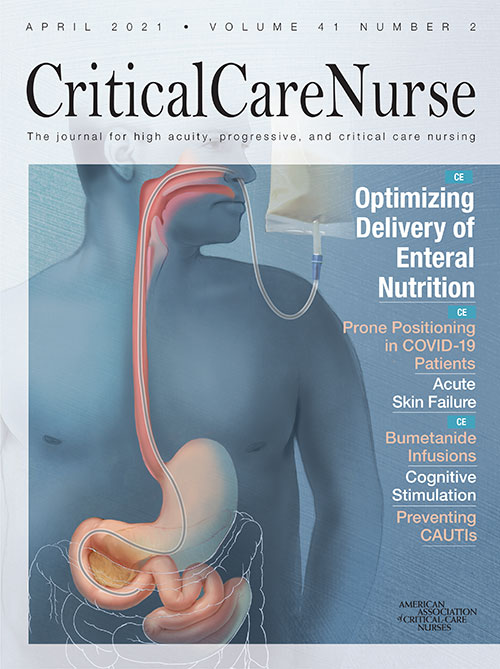Hospital-acquired CAUTIs are the second most common healthcare-associated infection, occurring most frequently in intensive care units (ICUs), according to the CDC. They are preventable events that can lead to poor patient outcomes and higher healthcare costs.
UPMC Williamsport is a 224-bed rural regional medical center in north central Pennsylvania and part of the University of Pittsburgh Medical Center Susquehanna health system. In 2018, the hospital reported 13 CAUTI events, exceeding its benchmark of four or fewer such infections annually. Six of the events occurred in the ICU.
To address the situation, the ICU established a CAUTI reduction task force, which developed a quality improvement initiative with both education and practice-related interventions. The multifaceted approach quickly reduced CAUTI rates and laid the groundwork for hospital-wide implementation with long-term impact.
“A Bundle-Based Approach to Prevent Catheter-Associated Urinary Tract Infection in the Intensive Care Unit” reviews the various components of the initiative and simple strategies that helped maximize their impact. The study appears in April’s issue of Critical Care Nurse (CCN).
During the four-month intervention period covered in the study, the ICU had no reported CAUTI events, compared with two CAUTI events during the pre-intervention period. In addition, the CAUTI incident rate decreased by 1.33 per 1,000 catheter days. Of note, total catheter days increased by 10.5% from the pre-intervention period, which may be attributed to higher ICU admissions and a higher device utilization ratio during the intervention period.
Co-author Holly Shadle, DNP, CRNP, FNP-BC, is a nurse practitioner in the neurosurgery department, Neuroscience Center at UPMC Susquehanna. She conducted the study at UPMC Williamsport with colleagues from the hospital and Duke University School of Nursing as part of her doctoral work at Duke.
“One of the strengths of this initiative was the overall simplicity of the interventions,” Shadle said. “These interventions were direct and efficient, with few direct costs or necessary equipment, making the process easily adaptable for hospital-wide use.”
The educational portion of the initiative began with all ICU nurses participating in module-based didactic training, followed by hands-on skill and competency sessions on each component of indwelling catheter care.
Another element of the bundle involved indwelling catheter-related documentation and orders, including a daily checklist and a nurse-driven removal protocol for discontinuing catheter use. The seven-item protocol was adapted from practice recommendations from the hospital’s larger umbrella organization.
The electronic checklist used drop-down features for all responses, except for the catheter insertion date, to prevent free-text responses and typos. Completing the checklist was required on a nightly basis for every room in the ICU, even those without patients or with patients who didn’t have indwelling urinary catheters.
Overall documentation compliance increased significantly from 50% before the interventions to 83.3% during the interventions.
Owing to the overall success of the project, the newly formed CAUTI quality assurance and performance improvement team began adapting the program for hospital-wide implementation. In addition, the informatics department began working to integrate a version of the daily checklist and nurse-driven removal protocol directly into the electronic health record.
As the American Association of Critical-Care Nurses’ (AACN’s) bimonthly clinical practice journal for acute and critical care nurses, CCN is a trusted source of information related to the bedside care of critically and acutely ill patients.
Access the article abstract and full-text PDF by visiting the CCN website at http://ccn.aacnjournals.org.
About Critical Care Nurse: Critical Care Nurse (CCN), a bimonthly clinical practice journal published by the American Association of Critical-Care Nurses, provides current, relevant and useful information about the bedside care of critically and acutely ill patients. The award-winning journal also offers columns on traditional and emerging issues across the spectrum of critical care, keeping critical care nurses informed on topics that affect their practice in acute, progressive and critical care settings. CCN enjoys a circulation of more than 130,000 and can be accessed at http://ccn.aacnjournals.org/.
About the American Association of Critical-Care Nurses: For more than 50 years, the American Association of Critical-Care Nurses (AACN) has been dedicated to acute and critical care nursing excellence. The organization’s vision is to create a healthcare system driven by the needs of patients and their families in which acute and critical care nurses make their optimal contribution. AACN is the world’s largest specialty nursing organization, with more than 130,000 members and over 200 chapters in the United States.
American Association of Critical-Care Nurses, 27071 Aliso Creek Road, Aliso Viejo, CA 92656; 949-362-2000; www.aacn.org; facebook.com/aacnface; twitter.com/aacnme




